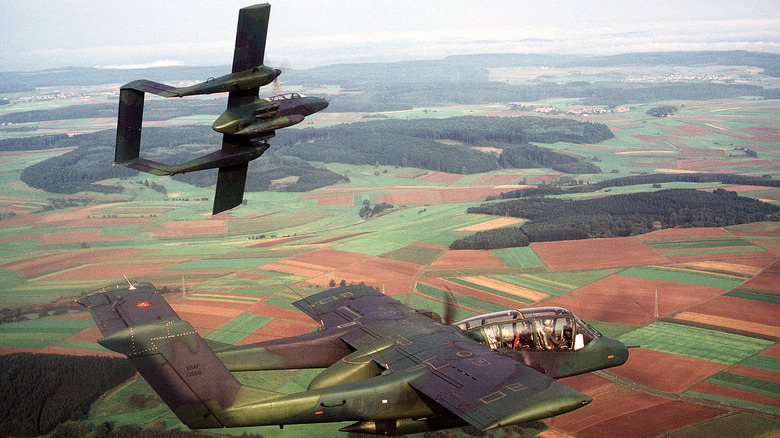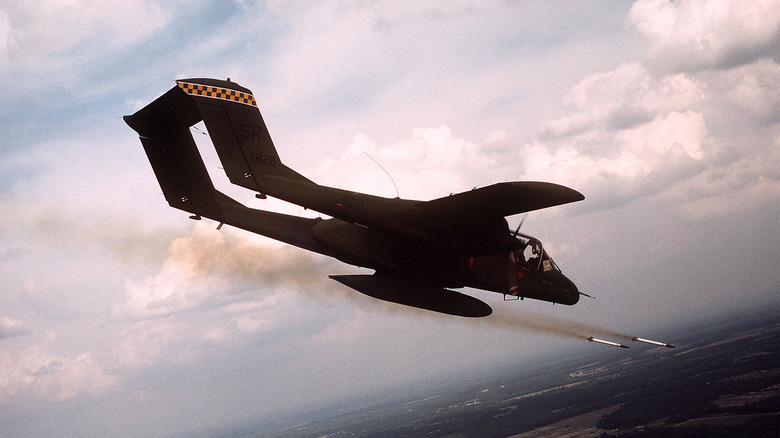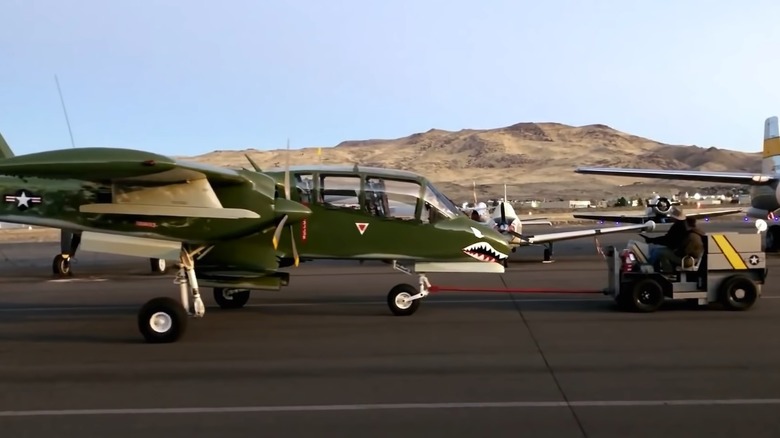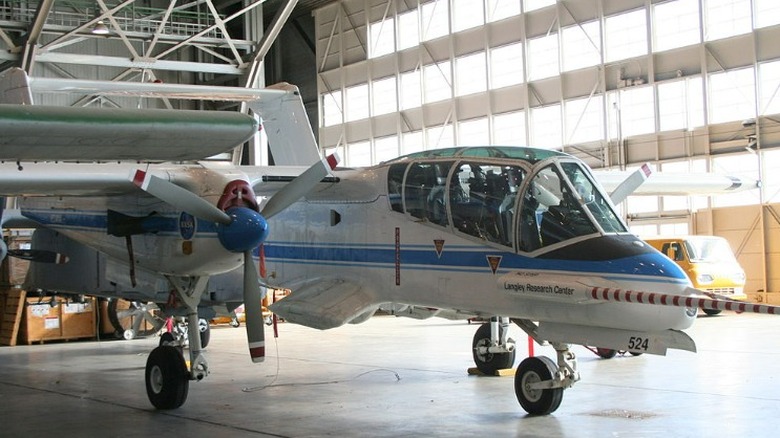The High-Flying Reconnaissance Plane That Could Take Off Almost Anywhere
One of the most unique aircraft to ever serve the U.S. military was the OV-10 Bronco. Built for service by North American Aviation and debuting in 1967, the aircraft design was initially conceived of by a pair of retired Marines: W.H. Beckett and K.P. Rice. Their blueprints were developed in the early 1960s, and centered on the short takeoff and landing (STOL) capabilities that are required in unconventional combat environments.
The designers sold the project with the help of a fiberglass prototype in 1963, upon which development would quickly ramp up. Across the U.S. military, service branches were either using helicopters or opting not to solve for this problem at all, considering that Korea was the first real conflict that saw American service members engaged on this type of terrain in the aerial age.
Their prototype was built for jungle warfare and placed nearly the entire arsenal of onboard weapons directly along the centerline of the aircraft for precision targeting. Soon after testing the design (albeit without loaded armaments), they began to shop the vessel around to a corporate buyer to build the design. North America purchased the aircraft and perfected the OV-10 before shipping the first OV-10s to the Marine Corps for use in Vietnam.
The OV-10 Bronco's blueprint suited the needs of the Vietnam War
The OV-10 Bronco's primary use case was as a support aircraft for use in the skies above Vietnam. As such, the aircraft had to be able to take off and land on short, improvised runways. It turned out that this capability was exactly what the Vietnam theater called for, and the two Marines' prototype fit the bill perfectly.
The Bronco also utilized landing gear with a heavy trail arm mechanism and 6.5 feet of clearance between the ground and fuselage. As well, the wingspan measured just 40 feet from the tip of one wing to the other. These features made the OV-10 a potent tool in the unconventional conflict space of Vietnam.
The aerial vehicle was purchased by the U.S. Department of Defense for use by the Air Force, Navy, and Marine Corps (under what was known as the tri-service program). 157 OV-10A Broncos were delivered to the U.S. Air Force between July 1968 and April 1969, and 114 were built for the Navy and Marine Corps (logistically part of the Navy's organizational structure).
The OV-10 was a fairly slow plane, achieving cruising speeds of 223 miles per hour and a top out at 281. The aircraft's altitude ceiling was 26,000 feet and it enjoyed a range of 1,240 miles. The aircraft packed a serious punch, though.
Its armaments included four M-60C machine guns within the aircraft itself, with an additional 3,600 pounds of additional, external munitions. These typically included AIM-9 Sidewinder missiles, 2.75/5.00-inch folding fin aerial rockets (FFAR), and various medium-weight bombs.
OV-10 Broncos have seen action in Iraq and Syria
More recently, the OV-10A Bronco was deployed in Iraq and Syria to combat the ISIS threat. In 2015, OV-10s were used to support Kurdish forces.
The unconventional flight capacity that the Bronco adds to a forward combat force, coupled with its grisly collection of armaments, make this quick-reaction aerial fighter a unique addition to American positions in this new arena. Unbeknownst to its creators, the OV-10 is an excellent force multiplier in supporting ground forces in mountainous and desert terrains, as well as the jungle-dominated landscape of Vietnam that it was initially deployed over.
This vessel is a light combat option, and one that can be used to great effect when spotting and tracking enemy ground forces. The OV-10's greenhouse canopy is wider than the fuselage itself, making visibility from the cockpit one of the aircraft's key strengths. Identifying, tracking, and destroying hostile personnel, equipment, and positions in coordination with ground forces is exactly what special operators and their allies need in this space.
As well, the OV-10 is far less expensive to operate than other attack aircraft. An hour in the air can cost as little as $1,000 (compared to a price tag as high as $40,000 to operate an F-15). These features make it the perfect tool for augmenting asymmetrical and unconventional warfare operations beyond its original use case.
The OV-10 has seen non-military service as well
In addition to service in the American armed forces, OV-10s have provided aerial capabilities to NASA, the U.S. Department of State, the Bureau of Land Management, and the California Department of Forestry and Fire Protection. The State Department's Air Wing utilized a number of OV-10s as herbicide sprayer vehicles in the war on drugs. The State Department added two additional propellers to the aircraft as well, making them an even more interesting sight in the skies.
CALFIRE utilizes 19 OV-10s (13 acquired from the Marine Corps, and six from the Bureau of Land Management) to coordinate aerial firefighting operations. The OV-10s act as lead-in tanker aircraft and as a platform to coordinate aerial assets more broadly.
NASA has used OV-10s since 1991 to conduct wake vortex studies and atmospheric science research. The outfit often brings their OV-10s to airshows as well. "The OV-10 is the most popular plane, by far, that we take," said Luci Crittenden, senior flight operations engineer at NASA's Langley facility. "People really connect with its history."
[Featured image by RadioFan via Wikimedia Commons | Cropped and scaled | CC BY-SA 3.0]



